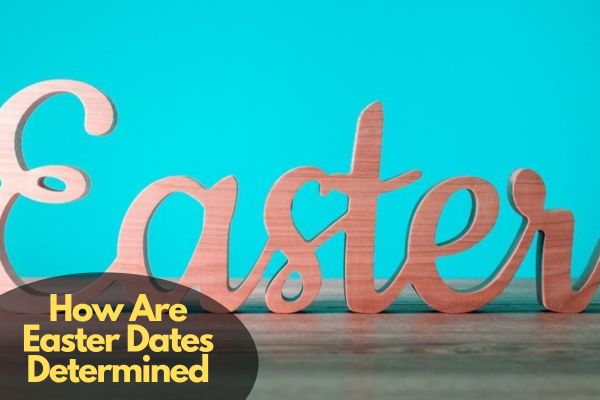The dating of Easter is a complex interplay between celestial mechanics, ancient traditions, and ecclesiastical decrees. Unlike many holidays anchored to fixed dates, the timing of Easter varies annually, which often leads to confusion and curiosity among the faithful and the inquisitive alike. How is it that this foundational Christian celebration does not adhere to a singular day? To unravel this enigma, one must delve into the methodologies rooted in both lunar cycles and historical precedents.
At the core of Easter’s timing lies the Church’s decision to link the festival to both the Jewish Passover and the cycles of the moon. This nexus is particularly resonant considering the narrative of the crucifixion and resurrection of Jesus, events that occurred in the context of Jewish Passover traditions. The epiphany of Easter is thus enmeshed in an intricate tapestry of lunar patterns and theological considerations.
The formula established by the Council of Nicaea in 325 A.D. set forth a definitive approach for determining the date of Easter. According to the council’s declaration, Easter Sunday is celebrated on the first Sunday following the first full moon that occurs on or after the vernal equinox, which is established as fixed on March 21. This means that Easter can fall anywhere between March 22 and April 25. The equation is crucial: the Church relies on the Paschal Full Moon, which is not determined astronomically but rather through ecclesiastical approximation, a unique version of lunar calculation.
This system of calculating Easter dates is a quintessential example of how ancient cultures viewed the cosmos and its influence on religious rituals. The lunar calendar, which predates our current Gregorian calendar, is pivotal to this calculation. For centuries, different cultures observed the full moon not merely as an astronomical phenomenon, but as a guide for planting, harvesting, and, for Christians, a beacon to ascertain significant liturgical observances.
The Jewish calendar, for instance, is lunar-based, meaning that Passover is celebrated on the 15th day of Nisan, the month that coincides with the first new moon of spring. The correlation between Passover and Easter underscores common theological roots, as Jesus’ resurrection is seen as the culmination of deliverance and renewal—similar themes that resonate within Passover narratives.
Moreover, the Church’s decision to establish the date of Easter in relation to the full moon imbues the observance with a cosmic significance that transcends rote calculations. It invites the faithful to reflect on the larger mysteries of life, death, and rebirth. The cyclical nature of the lunar cycle mirrors the Christian belief in resurrection, giving rise to the idea that just as the moon waxes and wanes, so too do believers experience the rhythms of faith and Grace.
This fascinating correlation between astronomy and spirituality reveals profound insights into why the celebration of Easter holds such significance within Christianity. The recurrence of Easter is built into the very fabric of creation, suggesting that divine order exists not only in theological texts but also in the natural rhythms of the universe. This convergence compels the Church to observe the celestial phenomena, reminding the faithful that their beliefs are anchored in both physical and metaphysical realities.
However, the variations in the dating of Easter across different Christian denominations adds an additional layer of complexity to this inquiry. The Western Christian Church, comprising Roman Catholic and Protestant traditions, adheres to the Gregorian calendar, whereas Eastern Orthodox Churches typically utilize the Julian calendar, resulting in different calculated dates for Easter celebrations. This divergence illustrates how Christians around the globe interpret time and tradition through distinct theological lenses, leading to a rich diversity in practice while united under the core belief in the resurrection of Christ.
Traditionally, many cultures observe various customs to celebrate Easter, which often entails a communal aspect of joy and festivity. Whether it is the decoration of eggs symbolizing new life, feasting with family, or participating in communal worship services, these customs highlight an essential truth: the resurrection of Jesus is not merely an isolated event, but a communal celebration of hope and renewal that draws believers together across generations.
Furthermore, the constancy of Easter’s deviation from a fixed date serves to keep the observance dynamic and alive within the ecclesiastical calendar. Each year brings a fresh opportunity for reflection, adaptation, and renewed spiritual commitment. By embracing this variability, Christians are reminded of the ever-changing nature of life, while also anchoring their faith in the eternal truths that Sunday represents—the victory over death and the promise of everlasting life.
In conclusion, the determination of Easter dates combines the celestial mechanics of moon phases with deeply rooted traditions, creating a tapestry that embodies more than mere mathematical calculation. The oscillation between joy and solemnity manifests in the lives of believers, prompting reflections upon the significance of redemption. It is this harmonious blend of science, tradition, and spirituality that contributes to the allure surrounding the Easter celebration, inviting all believers into a sacred dialogue with the cosmos as they commemorate the resurrection of Jesus Christ.



